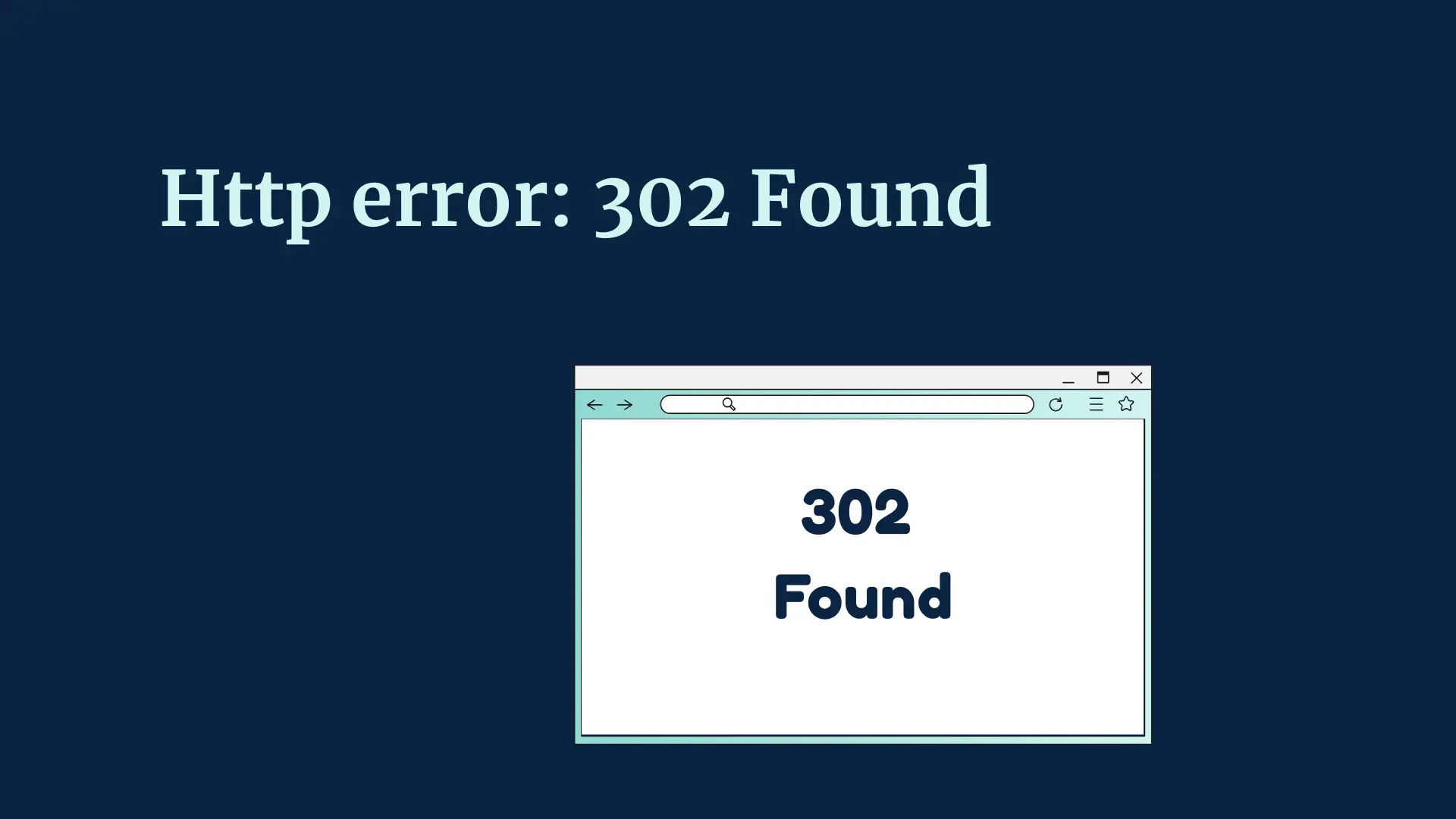Did you ever click a link and found “302 Found”, and then all of sudden you end up somewhere else? This is what we call a 302 HTTP response. Basically it is not a real error, in the sense that some link is temporarily broken.
In simple words we can say that Http error: 302 Found is a “sign post” which shows that “What you are looking for is here for now, but cannot be here permanently”. When you are using this 302 http response, then it helps your business site to work flawlessly and keeps your customers and search engine happy.
Key Takeaways
- “302 Found” or “error code 302” means a temporary URL redirect, it is not a permanent move.
- It tells browsers and search engines that the content is “temporarily moved somewhere else,” so the original address will be restored shortly.
- It does not pass all the SEO link value from your old site page to the new site page.
What Is HTTP 302 Found?
Let’s take a deeper look to understand what HTTP 302 Found.
➯ Meaning of 302 Status Code
When you see that “302 found”, it means the server is sending this message to you. Which try to tell you that the page or content you are looking for is temporarily available at different URLs. The server side includes a Location header which tells your search browser where to take users to, then your browser automatically takes your browser to that location.
As “3xx” response family means “Redirects” —that means the thing you are looking for has been moved to another location temporarily or permanently.
➯ Difference Between 302 and 301
- 302 means: The “content is moved permanently”, meaning the URL is gone forever. In this case you tell the search browsers and search engines to use new URLs from now on.
- 301 means: It means “Found”, meaning the content search engine or user is looking for is moved to a new page or URL temporarily. Use it when things revert back.
Common Causes of 302 Redirect
Following are the common causes of 302 Redirects, which helps you decide whether your site is misinterpreting or its right.
➯ Temporary URL Redirection
There are times when you just want to send your audience to somewhere else just for a short period of time. Following are the examples for error code 302 or 302 http response:
- Site page maintenance: the actual site page is down for a period of time for updates, so you show the “Come Back Soon” page instead of the real page.
- Testing phase or running campaigns: You set up a temporary landing page for your audience for special events or promotions or seasonal things only.
➯ Misconfigured Server or App Settings
There are cases when error 302 starts showing up mistakenly.
- Unawareness : Sometimes people set up redirects on their sites by thinking it should be permanent but mistakenly instead of using 301 they use 302.
- Setup Issue: Settings in your server, Content Management System, or plugin you are using are wrong, it will start sending traffic temporarily even though the page has permanently moved.
- Misconfiguration: Any misconfiguration in rules like in .htaccess (Apache) or nginx.
How to Fix or Use 302 Redirects
Once you find a 302 (through “error code 302,” “302 http response,” etc.), here is how you either make it correct if it is set up mistakenly or you can use it efficiently if it’s by purpose.
➯ Update Server Rules (.htaccess, Nginx)
- Use Apache (.htaccess): you might have a set of rules like “Redirect 302 /old-page /new-page” or using “Rewriting Rules”. Change that to Redirect 301 or you can adjust the rules to match and fulfil your intent.
- Nginx configuration: similarly – there might be HTTPs like return 302, or rewrite … 302. Switch to 301redirect if it is set up for permanent use.
➯ Ensure Correct Redirect Type
It is very important to set up a redirect with full caution and to fulfil the right purpose. For example if it is permanent then use 301 or if it is temporary then use 302 to avoid any uncertainty.
➯ Test with Redirect Check Tools
- It is important to use online redirect checkers to analyze what your server is returning (302 or 301).
- Make use of development tools in search browsers to see if the right response is set up or not.
- It is better to use Google search console or tools like this to see how a search engine like google takes your redirects and how it responds to it.
SEO Impact of 302 Redirects
By knowing how status 302 found impacts your SEO efforts, it helps you decide what is best for your website visibility.
➯ Does Not Pass Full Link Equity
- It does not pass full link equity. The link equity is basically the value from other sites linking to your site. With302 http response the search engines like google don’t transfer the whole value to new URL or page because they consider it temporary.
- In this case your new URL or page will not rank properly even if it is pointing toward the old URL.
➯ When to Use 302 Instead of 301
- When you are making temporary changes on site : just like promotions, site maintenance, or A/B testing.
- You want your audience to see a different site page but still want search engines to index (and give more importance to) the original URL or page.
FAQs
What does HTTP 302 mean?
It means the page is temporarily redirected to another URL. The server sends back a “302 Found” status code, along with a Location header, the location where the browser or your audience should go instead temporarily. Search engines are told the move isn’t permanent.
How is 302 different from 301?
302 is temporary, while 301 is permanent. The 301 redirect tells search engines and search browsers that the content is being moved to a new location permanently.
On the other hand, the 302 redirect tells search engines and browsers that content or page is being moved temporarily.
Is 302 bad for SEO?
Not always, In many cases, a 302 redirect won’t harm your SEO efforts if being used for a shorter period of time, but for long-term use it should be avoided.
When should I use a 302 redirect?
Use it for short-term changes Just like:
1. A/B testing for different page versions
2. Temporary site content move
3. Seasonal or limited-time promotions
4. Site updation or maintenance.
Can 302 redirects cause problems?
Yes, if used instead of 301, they can confuse search engines.
1. It can cause Poor user experience
2. It can be confusing for analytics or tracking.
3. If left for too long, then search engines will start treating it like 301, and it affects your credibility and ranking
4. Search engines start indexing both original and redirect page, that 5. causes confusion for browsers and search engines.

